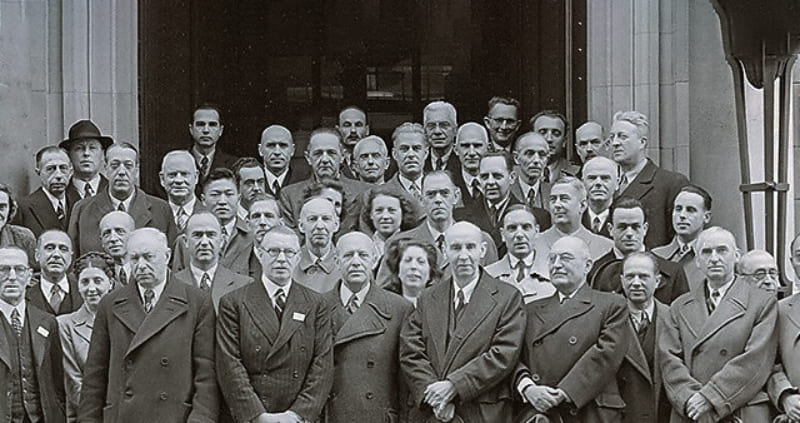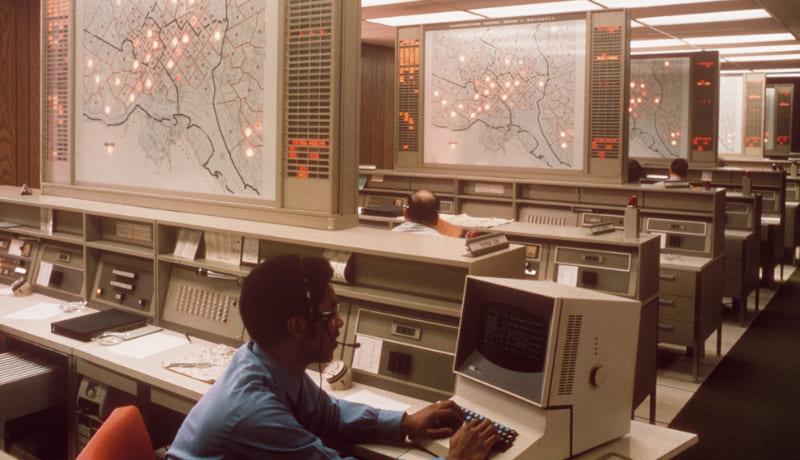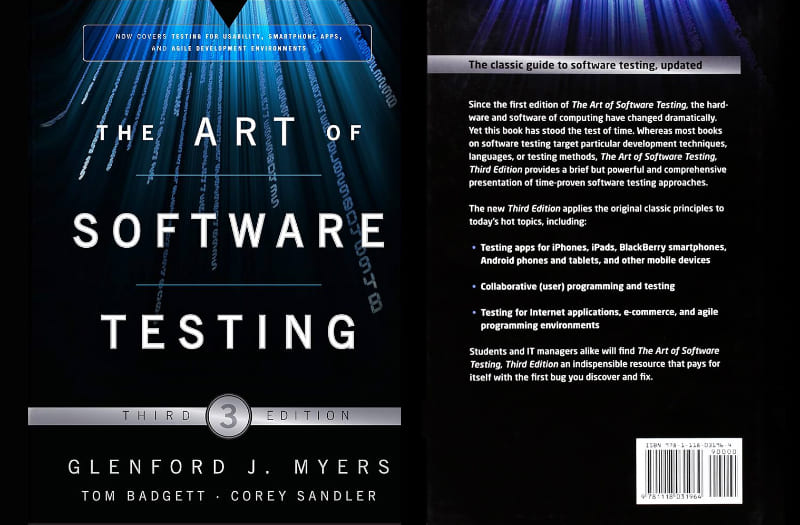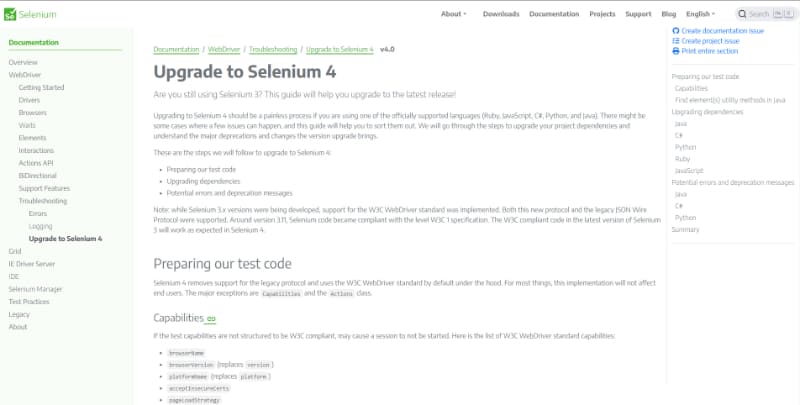Accept Cookies & Privacy Policy?
We use cookies to ensure that we give you the best experience on our website. If you continue to use this site we will assume that you accept and understand our Privacy Policy, and our Terms of Service.
The increasing emphasis on the timely delivery of a quality software has undoubtedly made software testing an inseparably integral part of the rapidly evolving world of Software Development.
Right since the invention of computers back in 1822 and straight to the current era of IoT and digitally integrated systems, the common terminology used for all system faults have consistently evolved into the vast subject of software testing and its peripherals.
The history of QA quietly dates back straight to the annals of the 19th century. Including a ginormous glossary packed with software testing terminologies, procedures, standards, policies, approaches, frameworks, and testing tools alike.
The roadmap of all QA concepts dates back synonymously right with the computer invention.
However, the common QA term ‘ bug ‘ was reportedly to be used first by none other than Thomas Edison himself in 1878 which was however mostly associated with his hardware concerns, while writing a letter to his colleague in the famed Edison papers-
Here’s what he wrote –
‘It has been just so in all of my inventions. The first step is an intuition and comes with a burst, then difficulties arise this thing gives out and [it is] then that “Bugs” as such little faults and difficulties are called show themselves and months of intense watching, study and labor are requisite before commercial success or failure is certainly reached.”
However, the common QA term ' bug ' was reportedly to be used first by none other than Thomas Edison himself in 1878 which was however mostly associated with his hardware concerns, while writing a letter to his colleague in the famed Edison papers.

Since the Babbage computer machines were first invented by Charles Babbage, an English inventor in 1822 being considered as first among the very first mechanical computers to grace the planet.

The World War II (1939 – 1945) furthermore led to rapidly evolving advancements especially in the field of computer technology. Electronic computers were predominantly deployed as common espionage tools for hacking in the secret codes and tapping in the signs and secrets of war communication. In the very same year (1945 ) the more latently descriptive term of a computer bug was first coined by Grace Murray Hopper marking the annals of history in the QA hall of fame.

The ISO standard certification, founded in 1946, majorly contributed towards streamlining and standardizing the procedures, artifacts, methods & techniques of all software development & testing Methodologies.

In the following year of 1951, Joseph Juran first marked the importance of Quality of software in his epic QA cult book titled – Quality control handbook.

Digital Computer Programming by Dan McCracken.Charles L. Baker distinguished program testing from debugging in his review of the book Digital Computer Programming by Dan McCracken [1]. Since then software testing has witnessed tremendous changes. This article aims to provide a holistic view on the maturation of software testing as an integral part of the Software Development Life Cycle (SDLC).

The Waterfall Methodology " The Waterfall approach was established in 1970 by Winston W. Royce. It contains five phases of management, where each requires a deliverable from the previous phase to proceed.

The history of DevSecOps starts in 1976. At this point, folks were trying to define quality for software. That begins with a paper that was written in 1976 to describe the attributes of quality. Many of these papers described factors associated with what was considered to be next-generation quality.

"Furthermore the software testing terminology was clearly distinguished when Glenford J Myers later published his book Art of Software testing in 1979.
By today’s understanding, the term 'errors' referring to human mistakes that lead to bugs or defects in the software, causing software failure was first referenced in this book."

William C Hetzel specified testing as “any activity aimed at valuating an attribute of a program or system. Testing is the measurement of the software quality” [4]. For the first time, testing was considered as a managed process that should be implemented throughout the entire software development life cycle. Furthermore, testing methodologies gained importance."

Dave Gelperin and William C. Hetzel classification classified the concept evolution of software testing according to the most influential testing models.

Testing was redefined to be “the planning, designing, building, maintaining and executing tests and test environments. In addition, Beizer’s progressive phases of tester’s mental model highlighted the importance of early test design throughout the software life cycle. It incorporated the ideas that good testing is a managed process, a total life cycle concerned with testability.
The 90s was also concurrent with the emergence of a testing method which is known as agile testing, testing techniques such as exploratory testing, rapid testing, and risk based testing. In fact, agile testing roots in an unproductive software development crisis which was widely referred to as "the application development crisis," or "application delivery lag."

In 1999 the first book on software automation was written by Mark Fewster and Dorothy Graham, in which they comprehensively treated software test automation issues, strategies, and tactics.

New development methodology such as Test-Driven Development (TDD), Behaviour-Driven Development (BDD), Domain-Driven Design (DDD), and Specification By example (SBE) altered traditional development and consequently testing.

Agile was formally launched in 2001, when 17 technologists drafted the Agile Manifesto. They wrote four major principles for agile project management, intended to guide teams on developing better software: Individuals and interactions over processes and tools.

The software testing’s definition broadened to encompass quality and be included in every stage of the software development life cycle. Testing was defined as “a concurrent life cycle process of engineering, using and maintaining testware in order to measure and improve the quality of the software being tested” by Craig and Jaskiel, in 2002.

"It is also worth mentioning that Bret Pettichord brought up the concept of Schools of Software Testing, in 2003. He classified software testing into five schools to explain why testing experts disagree and provide a basis for discussion. These schools are as following -
Analytic School
sees testing as rigorous and technical with many proponents in academia.
Standard School
sees testing as a way to measure progress with emphasis on cost and repeatable standards.
Quality School
emphasizes process, policing developers and acting as the gatekeeper.
Context-Driven School
emphasizes people, seeking bugs that stakeholders care about.
Agile School
uses testing to prove that development is complete; emphasizes automated testing."

New project management and bug tracking tools JIRA released.

New anticipated automation tool Selenium released.

New automation tool Soap UI released.

The DevOps movement started to coalesce some time between 2007 and 2008, when IT operations and software development communities raised concerns what they felt was a fatal level of dysfunction in the industry.

Around 2009, we started hearing about Continuous Deployment and Continuous Delivery, which as a concept, are “in essence the principle of continuous integration [pipelines] taken to its logical conclusion”, according to authors Jez Humble and Dave Farely in their important book Continuous Delivery.

What is QAOps framework?
QAOps is an emerging practice that integrates QA (Quality Assurance) into the software delivery pipelines. It necessitates the QA team to work directly with the operations team and the development team. We can attain this by integrating QA procedures, automation, and a QA reporting dashboard with the SDLC."

Selenium 4 was officially released on October 13, 2021.07-Sept-2021.

As per the market analysis report, the adoption of DevOps and QAOps will increase rapidly even in the year 2022 and its reach will go to $6.6 billion.

Testing & Scriptless automation software testing trend was to watch out for in 2023 is artificial intelligence(AI) and machine learning (ML).

Selenium 4 represents a major leap forward in the Software Testing Industry, with a range of new features and enhancements designed to improve the user experience, test execution and reporting, concurrency, stability, and performance.
This latest version boasts a revamped IDE, new APIs, enhanced Selenium Grid architecture, W3C standardized protocol, advanced diagnostics, relative locators, and more. Its cutting-edge capabilities have the potential to transform web automation testing and take it to new heights.
As one of the most widely used automation testing tools, Selenium 4 provides exceptional flexibility and scalability for automated cross-browser testing of web applications. For companies looking to stay ahead of the curve in software testing, Selenium 4 is a tool that CTOs should seriously consider."

DevSecOps market size is projected to reach USD 41.66 billion at a CAGR of 30.76% from 2023 to 2030 "The adoption of DevSecOps is expected to continue to grow as organizations focus on enhancing software security and countering the evolving threat landscape.
Continuous testing isn't just nice to have - it's an absolute must. That’s why, in today's digital landscape, reinventing yourself to meet changing demands is crucial. With technology evolving at breakneck speed and user expectations at an all-time high, organizations must stay on top of emerging trends to ensure their software is up to par."

How has it all changed?
In the following year of 1951, Joseph Juran first marked the importance of Quality of software in his epic QA cult book titled – Quality control handbook.
The Evolution and Art of Software testing.
Furthermore the software testing terminology was clearly distinguished when Glenford J Myers later published his book Art of Software testing in 1979.
By today’s understanding, the term ‘errors’ referring to human mistakes that lead to bugs or defects in the software, causing software failure was first referenced in this book.
Certifications
The other contributors were IEEE, CMMI, six sigma which further defined the standards of quality and frameworks for enhancing system improvements to achieve the idyllic and ultimate quality standards for all softwares alike.
Why software testing is still relevant?
The subject of software testing has been treated with the highest priority since antiquity following the birth and advent of computers. As it can significantly help avoid probable financial setbacks in the entire economy by preventing the untimely failures of softwares. For example A project worth $8 billion dollars in 1996 failed due to a software defect. And according to 2002, NIST (National Institute of Standards & Technology) reports the cost of software bugs to the US economy alone was recorded at $59.5 billion annually and has been exponentially ever growing since then.

In the myriad world of software development, outages and real incidents often make headlines, serving as cautionary tales for the industry. Despite rigorous DevOps practices, testing failures can still slip through the cracks, leading to significant disruptions.

In the world of modern business, efficiency isn’t just a common buzzword.it’s a necessity. Right from startups to global enterprises, the ability to streamline processes and enhance productivity can make the difference between success and stagnation.

In a jet-paced digital landscape, delivering a seamless user experience is kind of elementary for most businesses that are aiming to stay competitive and relevant. Yet, amidst tight deadlines and ambitious goals, performance testing often takes a backseat.

From humble beginnings to the cutting-edge innovations of today, test automation has evolved into an indispensable cornerstone of modern development practices. As we continue to push the boundaries of technological possibility.

Welcome back to our monthly poll session. This April, we’ve got our hands full with some intriguing poll scores from our teams, and it’s all about automation in the testing process.

What percentage of women are not pursuing their careers despite having an excellent educational qualification in India?
With a majority of 80%, voting for option D (more than 30%) calls for a deeper investigation into the heart of the matter.
Accept Cookies & Privacy Policy?
We use cookies to ensure that we give you the best experience on our website. If you continue to use this site we will assume that you accept and understand our Privacy Policy, and our Terms of Service.
| Cookie | Duration | Description |
|---|---|---|
| cookielawinfo-checkbox-analytics | 11 months | This cookie is set by GDPR Cookie Consent plugin. The cookie is used to store the user consent for the cookies in the category "Analytics". |
| cookielawinfo-checkbox-functional | 11 months | The cookie is set by GDPR cookie consent to record the user consent for the cookies in the category "Functional". |
| cookielawinfo-checkbox-necessary | 11 months | This cookie is set by GDPR Cookie Consent plugin. The cookies is used to store the user consent for the cookies in the category "Necessary". |
| cookielawinfo-checkbox-others | 11 months | This cookie is set by GDPR Cookie Consent plugin. The cookie is used to store the user consent for the cookies in the category "Other. |
| cookielawinfo-checkbox-performance | 11 months | This cookie is set by GDPR Cookie Consent plugin. The cookie is used to store the user consent for the cookies in the category "Performance". |
| viewed_cookie_policy | 11 months | The cookie is set by the GDPR Cookie Consent plugin and is used to store whether or not user has consented to the use of cookies. It does not store any personal data. |
Ready for a Quality Software?
Let’s Dig Deep Into Your Thought!